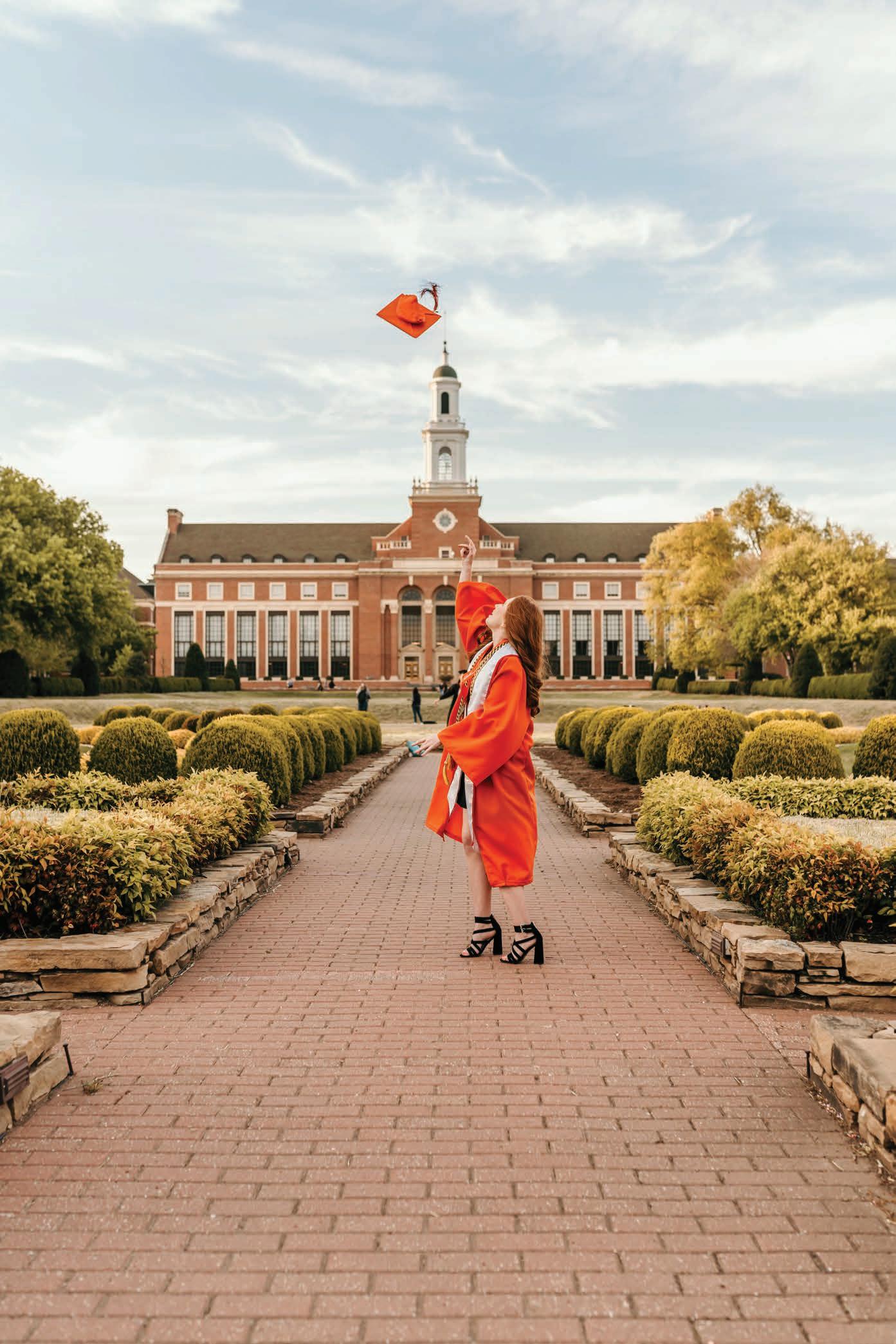
4 minute read
A Lesson to Hold
Technology allows students to ‘grasp’ concepts
As the professor calls the 200-student class to attention, the low hum of conversations dwindles. As the lesson goes on, some find it difficult to grasp the intricate concepts taught. However, a new tool helps students in this Oklahoma State University food science classroom.
Advertisement
Ranjith Ramanathan, associate professor in the OSU Department of Animal and Food Sciences, has taught the Fundamentals of Food Science, FDSC 1133, for seven years, giving him a good idea of the best ways to teach these topics, he said.
“It’s an intro-level class that gets up to 14 different majors from freshmen to seniors,” Ramanathan said. “Some have a really good science background, and some don’t. But, when we learn about basic food components, a lot of students have a hard time visualizing.”
Ramanathan started using some in-class demonstrations to help students understand what was going on; however, when he would ask students what was happening, many still could not explain it well, he said.
“Then, I started using printed 3D models,” Ramanathan said. “That helped a lot with the visualization.”
These models provided a key element missing to the lessons, he added.
“The models help with the student learning,” he said. “When I grade, now I can see a lot of students started using some technical terms, and I was kind of surprised to see that.”

Ranjith Ramanathan meets with students during an in-class activity revolving around the 3D model.
Photo by Todd Johnson.
Ramanathan decided to use the 3D models after a graduate student used one during a class presentation about encapsulation, he said.
“He showed me an encapsulatedmolecule, and I thought ‘OK, what can I use in my class?’ So, that’s where I started,” Ramanathan said.
He has used 3D models in his classes for about two years as a result of funding from an Association of Public Land-Grant Universities grant, he added.
“APLU has an innovate teaching grant I applied for,” Ramanathan said, “I use some of the funding to do this.”
Ramanathan gets his 3D models from multiple on-campus sources such as OSU’s Endeavor Lab or the OSU Department of Biochemistry and Molecular Biology.
The biggest challenge of this process is creating the model in the software, Ramanathan said. Luckily, he can buy pre-designed structures online, he added.
The use of the 3D technology plays an important role in Ramanathan’s teaching methods, which he focuses on students’ needs.
“Being a kinesthetic learner, the hands-on models and real-world scenarios that Dr. Ram presented really concreted in some of the more difficult material,” said Nick Hayes, an agricultural education senior.
Ramanathan has seen a change in students from year to year, but a few things stay the same with each student, he added.
“It’s all about students,” Ramanathan said. “Students have short attention spans, and that’s why I started using a break in my lectures.”
These breaks can involve anything from a video or an activity to the students interacting with one another about the 3D model, he added.
“Dr. Ram does a phenomenal job of engaging the students in the learning process and developing the teachings beyond just a lecture,” Hayes said.
The moments of engagement are not only seen by the students but also by the teaching assistants helping with the class.
“You can start to see those lightbulb moments in those breaks,” said Morgan Denzer, teaching assistant for Ramanathan’s class and graduate student in the OSU Department of Animal and Food Sciences.
Ramanathan also sees these moments when his students begin to understand, he said.
“It’s always exciting to see because students can start to see the parts of the structure they’ve learned,” Denzer said. “Now, they can connect with it visually versus with just the pictures they’ve seen.”
Students with the most noticeable “ah-ha” moments are the students without any chemistry or biology background, Ramanathan added.
“I can see in their eyes they’re really excited to see it,” Ramanathan said. “When they have a protein structure in their hands and start turning it over, they say ‘OK, this is what happens in this condition.’”
Ramanathan said he sees his students learning more from their peer-to-peer interactions.
“When they hold a model, you can see in their eyes as they point out the different parts and talk to their friends,” Denzer said. “Those are lightbulb moments.”
Hayes said he can see himself using the creative methods of teaching Ramanathan uses in his personal teaching career.
“Hands-on learning has a special place in agricultural education, and the models used in the introduction to food science class could easily be adapted to the high school setting to spark the interests of the next generation of food scientists at Oklahoma State,” Hayes said.
Moving forward, Ramanathan said he wants to grow his 3D model collection from the three he has now. Having more models in his collection will make group activities easier, he added.
Looking beyond 3D printing, Ramanathan said he is considering using virtual reality as a long-term goal. “Lecturing can be boring sometimes, but if the students start seeing the real picture, they engage more,” Ramanathan said.
MATT STAPLES

Story by Matt Staples of Lake County Florida










